Killing Dogs With Kindness
Are Our So-Called Positive Dog Trainers and Behaviourists KILLING our dogs with unworkable methods that do more harm than good?
Are Our Positive Only Dog Behaviourists and Trainers Killing with Kindness?
I believe that these trainers and behaviourists are responsible for the massive increase in aggression, euthanisation and dogs in rescue This article will hopefully explain why there is no such thing as a positive-only trainer or behaviourist, despite their assertions that what they do is totally positive and has no aversions. You cannot use just one part of operant conditioning and ignore the rest as that would make it a nonsense. Burrhus Frederic Skinner was the father of operant conditioning. You cannot take part of his work and ignore the rest, as it will not and cannot work. Behaviour cannot change unless all the consequences are in place.
Without going into too much detail, most behavioural work and some obedience training comes under the heading of operant conditioning. In operant conditioning, there are four consequences under Skinner’s amazing work. So let’s get the science quickly out the way though it is important to understand the basics of operant conditioning.
- Something Good can start or be presented, so behaviour increases = Positive Reinforcement
- Something Good can end or be taken away, so behaviour decreases = Negative Punishment
- Something Bad can start or be presented, so behaviour decreases = Positive Punishment
- Something Bad can end or be taken away, so behaviour increases = Negative Reinforcement
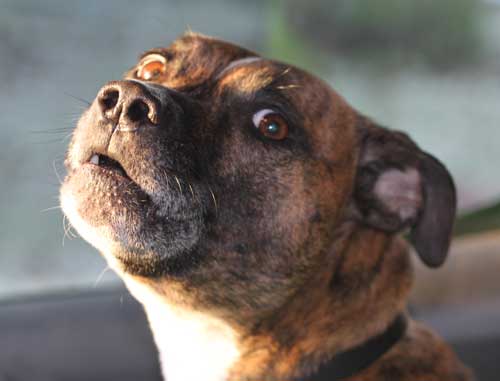
The first would be related to pleasure, such as treats a game or a lovely run in the park.
The second would be taking something away that the dog likes, such as a favourite toy or a treat, or its freedom ie putting it on a lead.
The third could be direct punishment, hitting or using electronic collars or choke/check chains.
The fourth is removing something that may be causing pain or distress, stop hitting or stop pressing the button on a shock collar.
What Constitutes a Good or Bad Trainer?: Most good behaviourists and trainers would tend only to use positive reinforcement and negative punishment, except in certain circumstances.
In my opinion, most bad trainers and behaviourists would either use just one or all four on a very regular basis. It may seem strange for me to say positive reinforcement can be bad, however, many trainers and some so-called behaviourists, think that using just positive reinforcement in isolation is the only ethical way to change behaviour.
If they really understood what behavioural and training methods were all about, then they would not take 1*Skinners work and remove three-quarters of it. According to Skinner, who created the behavioural quadrant. The term positive means that something is being presented soon after the response is made,
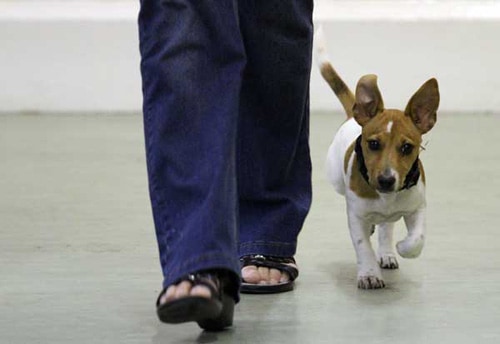
As a result of that presentation, the response increases in frequency or intensity. The positive in positive reinforcement has nothing to do with good or bad, or with what is beneficial or detrimental.
It is also not necessarily connected in any way to what anyone does or does not want. In fact, by definition, positive reinforcement could include what we would conceive as harsh punishment.
For instance, if a dog was to snarl and threaten you, and your response was to kick and abuse the dog, then that abuse could serve as a positive reinforcer.
The dog intensifies its aggression towards the owner because of the abuse. With the result that it would increase the level of aggression and the frequency.
Therefore, your abuse will have functioned as a positive reinforcer. The same as praising and treating a dog can reinforce bad behaviour if it is done at the wrong time. Just as surely as punishing him in the wrong way.
Understanding operant conditioning and behaviours are far more complex than the simplistic belief that punishment is bad and reinforcement is good. I only wish it was as easy as that. Like the old cowboy films where the hero has a white hat and the baddy a black one.
There is no animal on Earth that learns from positive only. Just look how the mother teaches the young pups to toilet outside the nest, how does she teach unruly puppies from 6 weeks onwards? What she doesn’t do is ignore bad behaviour then treat and praise them for good behaviour. She does not expect her puppy to make a fantastical leap of cognisant thinking and not to do the bad behaviour. She sets boundaries and instils what is acceptable and what is not.
Positive Only Trainers: I will defy any Trainer or Behaviourist to demonstrate their methods using only positive reinforcements. It is totally impossible to train any animal, mammal, dog, human, horse, or killer whale, using positive reinforcement only. These people are either deluded or lying. The very act of closing your hand on a treat as a dog tries to snatch it is negative. Walking a dog on a lead “negative punishment” turning your back on a dog that is jumping up, NEGATIVE.
Many of these people who claim to be positive only trainers are actually training in our colleges and universities; marking exam papers of students, who are supposed to be our future trainers and behaviourists. These teachers are often marking papers, based on their own biased and unsupported opinions and theories. I have seen this first hand.
I have taken numerous dog behavioural courses. In one case the senior tutor, who actually wrote and set the exams for this well known Animal Training College, totally Ignored the books we were told to read and actually disagreed with them. She marked papers on her own personal opinions. I found that totally idiotic. You are given books that you must read and study, then related to your expertise and knowledge of this reading material you are asked to answer numerous questions.
The tutor then ignores them and marks you for their own latest beliefs and ideas. Utterly useless. Is it any wonder people give up on education. Fortunately, in this case, many people had it reversed after complaints were made. But how many good students are being failed because of the tutor’s madcap ideas?
These people are quoting Skinner and talking about operant conditioning. Yet totally ignoring the fact that operant conditioning does not have just one element in isolation. It is my humble opinion that they believe themselves to be kind and fair, but in reality are probably instrumental in many dogs being euthanised or put into rescue or abandoned, than any of the really bad trainers that use lots of positive punishment and aggression in their training methods.
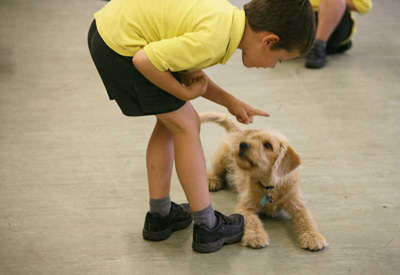
Ethical Training: These positive only trainers, really do not understand that all animals, including humans, need to be aware of cause and consequence. In their rush to show, they are kind and caring.
They ignore the main tenets and principals laid out in ethical conditioning. We also cannot claim we use kind and friendly methods when using negative punishment under operant conditioning.
That is exactly what a lead would be described as achieving. We cannot cherry-pick Skinners work and claim we take the moral high ground when that is clearly not the case.
The dog is running around enjoying itself we attach a lead and bang, negative punishment occurs because we have taken away something the dog enjoys (freedom).
Do we imagine for one second that this is a positive experience? I wonder how many people have noticed that many dogs will walk perfectly well to heel without a lead, then pull like a train when on it.
Ever thought why? One dog training association called the APDT The Association of Pet Dog Trainers, failed many prospective members for just saying the word “No” to a badly behaved dog.
They believe it stresses the dog. Where is the basis for discipline and learning? how can you instil mutual respect and the ability to understand the consequences of unacceptable actions when you are castigated for just saying the word NO!
This organisation was started by John Fisher a brilliant behaviourist. Sadly no longer with us. He was instrumental in getting me to understand that the behavioural path coupled with training expertise was the right way forward. I knew and respected John Fisher. I believe he would spin in his grave to see what these idiots have done to the organisation he founded.
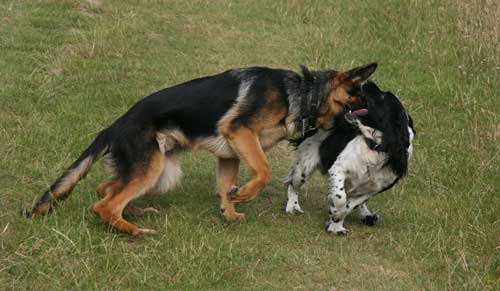
Should we Ignore Bad Behaviour?: These same trainers tell us to just to turn your back and fold your arms when the dog is biting you.
This could result in these dogs becoming more frustrated and anxious, therefore, more dangerous and aggressive.
If the initial frustration and attention-seeking behaviours do not work then it could result in a far greater escalation of aggression or unacceptable behaviour.
I often have to follow in after these positive-only training sessions. I then go back to scratch and put in place a kind but effective programme that actually benefits both the dogs and the owners. Amazingly some of these behaviourists and trainers never even touch the dogs they are treating.
They sit and observe for a few hours. Write a fifty-page report on what you should do, but are totally incapable of doing it themselves. It’s like learning to drive by reading a book. I have worked out that over 40% of my work entails working with dogs that other trainers and behaviourists have failed to make any appreciable difference. Nearly all of those who purport to be positive only or force-free trainers.
These are the trainers that instead of teaching a dog to heel, put on what they consider is kind and gentle devices such as a Harness or even worse a Halti. I have seen dogs desperately struggling to get these infernal devices off their faces. Many dogs have hair rubbed down to the skin, blisters and abrasions and infections where they have ridden up and rubbed against the eyes.
These are supposed to be the kind alternative? All harnesses, Halti’s and headcollars work on impeding the dog to make it stop pulling. That can only happen through pain and discomfort. They also do not teach the dog to heel they only restrict it. If the “training aid” you are using does not actually train the dog. in other words, when you take it off the dog immediately pulls again. Then it is definitely not a training aid and must work using pain and discomfort.
They were not manufactured by Harry Potter. Therefore, how did you imagine they worked? I teach a method, which actually trains the dog to walk to heel, rather than just impedes and distresses it. Looking at the model for operant conditioning, then these devices would come under positive punishment as they can cause pain discomfort and distress.
| Is your dog pulling on the Lead or Jumping Up? See article and Video Clips. The Jingler |

No Boundaries: In many recent press and media articles, there have been calls to change the way schools, organisations, and families instil ethics and discipline in our children
Experts have come out and said that we have failed recent generations, by not teaching and extolling the virtues of respect and instilling an ethical and moral compass
There are people in positions of education and training, that believe neither children nor pets should be controlled by anything other than positives. No negatives, no discipline, no control, Ignore the bad, reward the good.
Unfortunately, we are creating a society that fails to instil morals, decency, and self-control. We owe our children and our pets an educational and training programme whereby they understand boundaries and guidelines, right from wrong, respect, rather than contempt.
It does not require cruelty pain or distress. In a society where we cannot even say NO! Then anarchy will reign. We are now euthanising far more of our pets for behavioural and training problems than ever before.
Just think for a moment why that may be happening? I have just read a report that aberrant behaviour in our dogs is the main reason they are euthanised. I would put that statistic firmly at the door of the positive only and so-called force-free trainers.
Consistency: All animals especially mammals, need a track to run on consistency is the key. In the wild all actions have consequences; these boundaries are taught by pack members including the mother and father who are controllers in the pack. Surprisingly there are very few injuries from aggression or fights in wolves, coyotes, wild dogs or jackals.
These animals have a strong and powerful set of rules and hierarchies that filter down to even the bottom members of the pack. They have a strong ethos of belonging. Pack position and rank are respected and adhered to. That is because the packs we know it is not run by Alphas and a dictatorship it is a family unit. Mother father and offspring.
It is important to understand that leadership in this situation is rarely tyrannical, it is based on mutual respect. Posture aggression is the norm rather than any real attacks to reinforce rank. The reason for this is obvious, tyrants and overtly aggressive leaders would engender fear, rather than respect, insecurity rather than confidence. Unless the pack works as an efficient cohesive unit, then their hunting forays would be far less successful.
We as humans cannot be alphas to our dogs. (After all, we are not dogs) as I have explained in my article “Dogs and the Alpha Myth” But we can layout boundaries, guidelines and rules to follow. We can control resources which may include food, toys, games and even access to us. As resource controllers, we can gain mutual respect without fear, thereby creating a deeper bond with our pets. But as in any community, pack, or family, there have to be guidelines and these must be clearly defined for them to work.
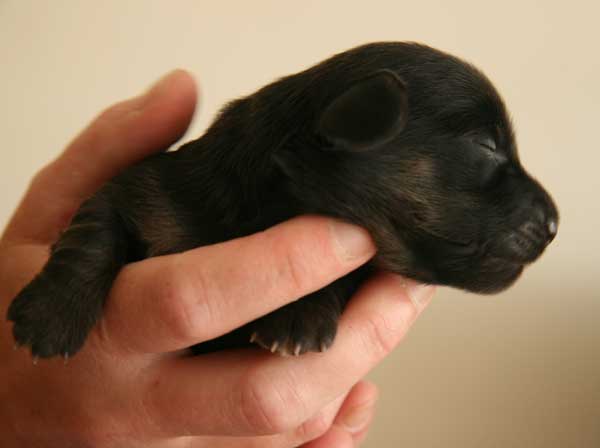
Stress: Stress plays a vital role in learning. Too much stress and learning collapses, too little stress and learning does not occur, the correct amount of stress and learning happens and change begins.
When we first decided to launch an organisation related to dog behaviour and training combined (PAACT) The Profession Association of Applied Canine Trainers.
One lady contacted me, who was a member of an organisation that she would not disclose, probably the APDT.
She demanded to know if we allowed our members to stress any of the dogs we treated. I realised immediately I was talking to a rank amateur, who had no idea how mammals and humans learn.
I explained the importance of stress in learning. That there is good and bad stress. I pointed out how important certain aspects of stress can be in a dog’s growth, both mentally and physically.
I gave an example with regard to puppies. Learning and stress. This does not just begin when they reach their new home, it starts the day they are born even in the womb. The only two senses puppies have until about two weeks old is smell, touch and taste. They are born blind and deaf. Hearing at three/four weeks, good sight at six, though they can see before that, though it is almost like looking through a veil.
Humans handling pups gently and carefully during this vital time from day one onwards are able to create a mild stress response in the puppy, which acts to improve the puppies both physically and emotionally. Therefore, this is good stress. Pups that are handled during the first few weeks of their life mature and grow quicker; they are more resistant to infections and diseases are generally more stable. They handle day to day stress far better, are more exploratory, curious, and learn much faster than pups that are not handled during this crucial period.
That is why we should be very careful when choosing a puppy. Do not purchase from the puppy farmers or large breeders who do not have the time to handle the pups, and never get one from a pet shop. Look for the breeders that are not commercially minded, who have them indoors and clearly loves dogs, not just for the money they can make.
Needless to say, I did not get an answer or even an acknowledgement from this lady. I really did not expect to. When people do not truly understand how dogs learn, then all they do is follow the latest fad and theory. Unfortunately, this is almost always to the detriment of the dogs. We must all be aware and conscious of the fact that both puppies and adult dogs must have the full spectrum of experience, not just the positives, but also the consistency and understanding of what is acceptable and what is not.
Positive reinforcement is excellent but not in isolation. It must be coupled with consistent actions, encouraging good behaviour but actively ensuring we don’t reward or ignore the unacceptable behaviour. If right or wrong is clearly indicated then it’s far easier to understand and follow. Your dog will be calmer more settled and your relationship will be stronger and deeper, both owner and pet will benefit.
Let us all hope that the dogs currently being re-homed, sent into rescue centres, or euthanised will once again decline because we are actually training them not just praising them.
© Stan Rawlinson 07 April 2009
Updated regularly. Last update July 2020
Further Articles and Reading
(1) The Jingler.
(3) Possession Aggression Resource Guarding
(4) Critical Periods in a Pups Growth
(5) Dominance
(9) Puppy Classes
2* Scott and Fuller. “Genetics and the Social Behavior of the Dog” Is one of the most important texts on canine behaviour published to date
http://www.press.uchicago.edu/ucp/books/book/chicago/G/bo3638859.html






